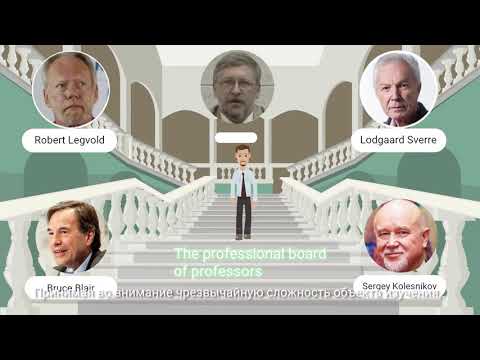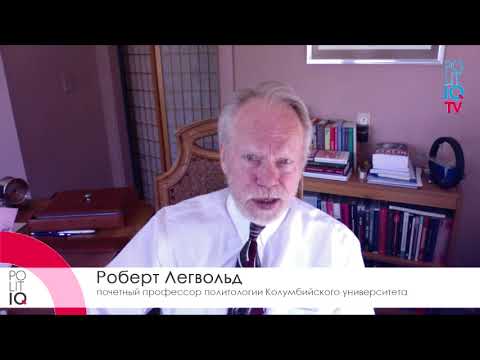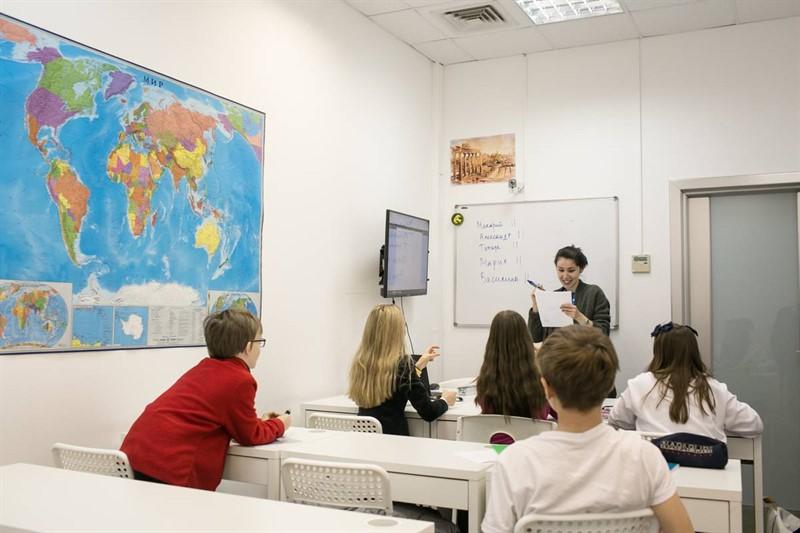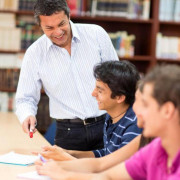Lomonosov moscow state university
Содержание:
- History
- Moscow State University
- Испанский
- You are here
- Related content
- Programs available
- University Highlights
- English language requirements
- Традиции педагогического образования
- Famous graduates
- Международное сотрудничество
- What’s nearby?
- Alumni of Moscow State University
- What can you see at Moscow State University?
- What’s nearby?
- Вестник МГОУ
- Credits
History
Main buildings of the university in the Mokhovaya Street, 1798.
The university was established on the instigation of Ivan Shuvalov and Mikhail Lomonosov by a decree of Russian Empress Elizabeth dated January 25, 1755, which is still celebrated as Students’ Day in Russia. First lessons were held on April 26. Originally located in the Principal Medicine Store on Red Square, the university was transferred by Catherine the Great to the present Neoclassical building on the other side of Mokhovaya Street. The main building was constructed between 1782 and 1793 to a Neo-Palladian design by Matvei Kazakov and rebuilt after Fire of Moscow (1812) by Domenico Giliardi. At this time the university had three faculties: philosophy, medicine, and law.
In 1804, medical education was split into Clinical (therapy), Surgical, and Obstetrics faculties. In 1884-1897, the Department of Medicine, supported by private donations, City Hall, and the national government, built an extensive, 1.6 kilometer long, state-of-the-art medical campus in Devichye Pole, between the Garden Ring and Novodevichy Convent. In 1905, a social-democratic organization was created at the university calling for the tsar to be overthrown and for Russia to be turned into a republic. The Tsarist government repeatedly began closing the university. In 1911, in a protest over the introduction of troops onto the campus and mistreatment of certain professors, 130 scientists and professors resigned en masse, including such prominent names as Nikolay Dimitrievich Zelinskiy, Pyotr Nikolaevich Lebedev, and Sergei Alekseevich Chaplygin. Thousands of students were also expelled.
After the October Revolution in 1917, the school began opening admission to all qualified applicants, not just those of the wealthy. In 1919, tuition fees were done away with, and a preparatory facility was created for children of the working class so that they would be able to pass the admission examinations. The political repressions of the 1930s and 1950s negatively affected the development of scientific ideas, as Soviet scientists had virtually no contacts with their colleagues abroad, while certain branches of science were condemned as based on the ideology alien to Communist ideas, and a number of scientists and scholars were sentenced to life imprisonment for their research efforts.
Moscow University in 1900
In 1940 the university was re-named in honor of its founder Mikhail Lomonosov, coinciding with the beginnings of World War II, another difficult time for the university. During the invasion of Russia by Nazi Germany, academic studies were suspended and most of the school was relocated far from the war front, yet hundreds of students and professors stayed to join the army and fought to protect the capital. Many researchers at the university stayed as well, carrying out programs to aid the war effort. After the war, lawyers from the university played a vital role in the Nuremberg and Tokyo trials.
During the post-war period the leading role of Moscow University in the restoration and further development of the country was fully recognized. There was a fivefold increase in the state funding, the new University campus was built on Vorobievy Gory (Sparrow Hills), where all the lecture halls and laboratories had the latest equipment available at the time.
After 1991, nine new faculties were established. In 1992, a new charter was proposed and debated upon until 1998, when it was adopted. The result gave the university a unique status: it is funded directly from the state budget (bypassing the ministry of education) which provides a significant level of independence.
Moscow State University
Moscow State University is Russia’s oldest university and the educational and scientific centre of the country, counting Noble Laureates, renowned scientists, intellectuals and political figures among its current and former staff and students. Its main campus is perched on a hilltop overlooking Moscow and is home to one of the capital’s most commanding buildings. Aside from exploring the campus to get a glimpse of life at Russia’s top university, you can visit Moscow State University’s many affiliated attractions on campus and around the city, including the Zoological Museum, Museum of Geology, Botanical Gardens, and viewing platform from the 32nd storey of the main building.
Испанский
|
Общий курс испанского языкаоткрыт набор Записаться  |
|||||||||||
| Данный курс рассчитан на слушателей, которые продолжают изучение испанского языка, одного из самых востребованных языков в мире, на котором говорят около 500 миллионов человек. Занятия в группах проводятся по чрезвычайно эффективной коммуникативной методике. Индивидуальный подход к каждому слушателю, высококвалифицированные преподаватели и самые современные учебные пособия позволят с легкостью научиться общаться на испанском языке. | |||||||||||
|
You are here
Home > Lomonosov Moscow State University > Lomonosov Moscow State University
294842
OVERVIEWUNDERGRADUATEPOSTGRADUATEMORE
QS Global World Ranking
#74
Status
Public
Research Output
Very High
Total Students
30,152
Academic Faculty Staff
6,575
International Students
10,239
Related content
 7 причин выбрать МГУ
7 причин выбрать МГУ
Вы хотите получить диплом главного вуза страны — МГУ имени М. В. Ломоносова, который не надо п…
 Зачем поступать на магистерскую программу МГУ и PolitIQ?
Зачем поступать на магистерскую программу МГУ и PolitIQ?
О выгодных плюсах магистерской программы Post-Soviet Public Policy рассказывает общавшийся с п…
Lomonosov Moscow State University
Lomonosov Moscow State University
Lomonosov Moscow State University
Lomonosov Moscow State University
Lomonosov Moscow State University
Lomonosov Moscow State University
Lomonosov Moscow State University
Lomonosov Moscow State University
Lomonosov Moscow State University
Lomonosov Moscow State University
Lomonosov Moscow State University
Lomonosov Moscow State University
Lomonosov Moscow State University
Lomonosov Moscow State University
Lomonosov Moscow State University
Lomonosov Moscow State University
Lomonosov Moscow State University
Lomonosov Moscow State University
Lomonosov Moscow State University
Lomonosov Moscow State University
Lomonosov Moscow State University
Lomonosov Moscow State University
Lomonosov Moscow State University
Lomonosov Moscow State University
Lomonosov Moscow State University
Lomonosov Moscow State University
Lomonosov Moscow State University
Lomonosov Moscow State University
Lomonosov Moscow State University
Lomonosov Moscow State University
Lomonosov Moscow State University
Lomonosov Moscow State University
7 причин выбрать МГУ
Вы хотите получить диплом главного вуза страны — МГУ имени М. В. Ломоносова, который не надо п…
Зачем поступать на магистерскую программу МГУ и PolitIQ?
О выгодных плюсах магистерской программы Post-Soviet Public Policy рассказывает общавшийся с п…
Lomonosov Moscow State University
Lomonosov Moscow State University
Lomonosov Moscow State University
Lomonosov Moscow State University
Lomonosov Moscow State University
Lomonosov Moscow State University
Lomonosov Moscow State University
Lomonosov Moscow State University
Lomonosov Moscow State University
Lomonosov Moscow State University
Lomonosov Moscow State University
Lomonosov Moscow State University
Lomonosov Moscow State University
Lomonosov Moscow State University
Lomonosov Moscow State University
Lomonosov Moscow State University
Lomonosov Moscow State University
Lomonosov Moscow State University
Lomonosov Moscow State University
Lomonosov Moscow State University
Lomonosov Moscow State University
Lomonosov Moscow State University
Lomonosov Moscow State University
Lomonosov Moscow State University
Lomonosov Moscow State University
Lomonosov Moscow State University
Lomonosov Moscow State University
Lomonosov Moscow State University
Lomonosov Moscow State University
Lomonosov Moscow State University
Lomonosov Moscow State University
Lomonosov Moscow State University
Programs available
Undergraduate Faculties/Departments and Programs
School of Business Administration
Postgraduate Faculties/Departments and Programs
School of Business Administration
University Highlights
Lomonosov Moscow State University is one of the top Public universities in Moscow, Russia. It is ranked #74 in QS Global World Rankings 2021.
- QS World University Ranking
#74 - QS WUR By Subject Ranking
#21 - EECA University Rankings
#1 - Graduate Employability Ranking
#101-110
%
PG students
%
UG students
53%
UG students
47%
PG students
Total faculty staff — 6,575
698
International staff
5877
Domestic staff
Total faculty staff — 6,575
Domestic staff 5877
International staff 698
QS Stars is a rating system that helps you select the right university based on your interests. It provides a detailed look at an institution, identifying which universities rate highest in the specific topics that matter to you, like facilities, graduate employability, social responsibility, inclusiveness, and more.
For more in-depth information about QS Stars, please click here.
English language requirements

This institution accepts IELTS! Find your nearest test centre and test dates.
Please check the specific English language requirements for your chosen course with the university.

Sign up to our monthly newsletter to receive regular content highlights direct to your inbox.
Sign up now!

Join QS Leap, the most advanced free test-prep platform in the world.
Get Started
Традиции педагогического образования
В 1825 года основано Елизаветинское училище благородных девиц (позже институт).
Институт предназначался для обучения дочерей небогатых дворян, чиновников и духовенства . Институт был назван в честь императрицы Елизаветы Алексеевны и располагался в усадьбе, владельцами которой в разные годы XVIII века были князь-кесарь царства Русского Ф. Ю. Ромодановский, сын канцлера, граф М. Г. Головкин.С середины XVIII века при Н. А. Демидове комплекс зданий расширяется. Во второй половине XIX века на территории появляется церковь.
В «высочайше утвержденном Положении» говорилось, что институт был основан с целью «воспитания бедных девиц», предпочтительно сирот свободного состояния… чтобы дать им возможность со временем содержать себя трудами, почему и обучение их должно состоять преимущественно в женских рукоделиях». Для «необыкновенно способных к учению» по мере возможности предполагалось учредить особые классы.
В первом наборе было 24 девушки (позже число сильно увеличилось), принимали туда в возрасте от 7 до 11 и выпускали в 20 лет. В случае отсутствия родителей или попечителей судьбы девиц планировалось устраивать в приличные места. Позже разрешили обучать учениц и за их счет. Пансионерками могли поступать дочери бедных дворян и классных чиновников. Кроме гимназического образования, преподавали дополнительные предметы, а за отдельную плату — и музыку с танцами. После окончания курса таким ученицам без экзаменов выдавался «Аттестат домашней наставницы. » Ученицы обязаны были говорить между собою один день по-французски, другой по-немецки, и если кто забывал и заговаривал по-русски, тому на шею вешали вырезанный из бумаги язык, ученица с этим красным длинным языком должна была сидеть на уроках, ходить гулять и т. д. до тех пор, пока кто-нибудь еще не оговорится, и тогда это украшение переходит к другой. Сильно сдружил Институт воспитанниц между собою, и чем ближе подходило время разлуки, тем больше грустили они. Ни одна из них не знала, как сложится ее жизнь. Большинство были сироты, их ждал чужой дом и труд, а сами-то они были еще дети 16 или 17 лет. ( Рамазанова А. Н. Елизаветинский институт, 1849—1854 гг)
Уровень обучения в Елизаветинском училище был равным Петербургскому Смольному институту благородных девиц.
После Октябрьской революции 1917 года учебные заведения министерства просвещения переходят под опеку народного комиссариата просвещения. Московский Елизаветинский институт благородных девиц перепрофилируется в Московский областной педагогический техникум им. Профинтерна. С введением в 1930 году обязательного начального образования перед педагогическим техникумом встала огромная задача- обеспечить высококлассными учителями Москву и ближайшие области.Здание главного корпуса нынешнего университета — бывшая усадьба Н. А. Демидова (внука известного промышленника и сподвижника Петра I). После пожара и разорения 1812 г. она была продана.
С 1931 года техникум преобразовывается в Московский областной педагогический институт.
С 1957 по 1991 годы Московский областной педагогический институт носит имя Н. К. Крупской.
В 1991 году МОПИ им. Н. К. Крупской преобразовывается в Московский педагогический университет (МПУ), а 2002 году Московской области приняло решение о придании этому образовательному учреждению статуса классического учебного заведения и переименовании его в Московский государственный областной университет.
Аттестат Елизаветинского института 1890 года.
Famous graduates
- Aleksandr Herzen (1812–1879) – an outstanding Russian teacher, philosopher, and publicist. Publisher of the revolutionary weekly newspaper The Bell.
- Nikolai Sklifosovsky (1836–1904) – Emeritus Professor of Medicine, military field surgeon. Author of scientific papers on abdominal surgery. Introduced antiseptic practices during surgical operations.
- Ernst Neizvestniy (1925–2016) – Soviet and American sculptor, author of the famous sculpture The Tree of Life and the sketch of the country’s main television award – TEFI.
- Lyudmila Alekseeva (1927–2018) is a Russian public figure, one of the founders of the Helsinki Group, Russia’s oldest human rights organization.
- Mikhail Gorbachev (1931) – the first and only President of the USSR, winner of the Nobel Peace Prize.
- Elvira Nabiullina (1963) – Chairman of the Central Bank of the Russian Federation, statesman and politician.
Международное сотрудничество
Международная деятельность – одно из магистральных направлений деятельности МГОУ, отвечающее стратегическим задачам и приоритетам развития системы образования Московской области в соответствии с задачами общегосударственной политики Российской Федерации в области образования и науки.
К главным составляющим международной деятельности МГОУ относятся:
- дальнейшая интернационализация образовательной и научно-исследовательской деятельности университета;
- участие в государственной политике по развитию экспорта образовательных услуг Российской Федерации;
- укрепление позитивного имиджа Московской области за рубежом;
- приём иностранных граждан на обучение на основные и дополнительные образовательные программы;
- развитие академической мобильности студентов, аспирантов и сотрудников университета;
- разработка и реализация совместных образовательных программ, в том числе программ двухдипломного образования;
- приём иностранных преподавателей и исследователей на работу в МГОУ;
- поддержка русского языка за рубежом.
Партнёры:
- Карлов университет города Праги (Чешская Республика)
- Лимес-гимназия города Вельцхайма (Германия)
- Институт экономического образования университета им. Карла фон Осецкого (г. Ольденбург, Германия)
- Мюнхенский институт иностранных языков и переводчиков (SDI)
- Бургундский университет (г. Дижон, Франция)
- Университет Суонси (Уэльс, Великобритания)
- Потсдамский университет (г. Потсдам, Германия)
- Университет имени Св. Кириллаи Мефодия в г. Трнава, Словакия
- Международный славянский университет «Гаврило Романович Державин» (г. Свети-Никола, Македония)
- Университет имени Джавахарлала Неру (г. Нью Дели, Индия)
What’s nearby?
• Luzhniki Stadium – the national stadium of Russia and the country’s largest football stadium, which hosted the 1980 Olympic Games and 2018 World Cup. Visitors can take tours of the stadium or – even better – enjoy a football match there! A 720-metre cable car travels from Vorobyovy Gory to the Luzhniki Stadium, offering unparalleled views over Moscow.
• Novodevichy Convent – one of ancient Moscow’s most sacred sites. It is the most magnificent example of Moscow Baroque architecture preserved in Russia to this day, seen in its churches, palaces and towers, is home to a treasure trove of religious artifacts and artwork, and is the resting place of Russia’s most eminent figures.
Essential Information for Visitors
Opening HoursThe buildings and grounds of the main campus on Vorobyovy Gory can be viewed from outside at any time of day. Opening hours for the university’s museums and tours may be found on their websites.
Alumni of Moscow State University
As Russia’s top university, Moscow State University counts many acclaimed figures among its alumni throughout the centuries, such as writers Mikhail Lermontov, Ivan Turgenev, and Anton Chekhov, the ‘father of Russian socialism’ Alexander Herzen, and statesman Grigory Potemkin. Of 18 Russian Nobel Laureates, 11 are graduates and professors of Moscow State University, and include Boris Pasternak, who won the Nobel Prize for Literature in 1958, and Andrei Sakharov and Mikhail Gorbachev, who won the Nobel Prize for Peace in 1975 and 1990 respectively.
What can you see at Moscow State University?
• Main campus: Located on Vorobyovy Gory (Sparrow Hills). The campus is home to the world’s largest educational building, with a viewing platform on its 32nd floor, expansive and verdant grounds, the Museum of Geology, Botanical Garden, and a famous viewpoint offering a panorama over Moscow
•City centre campus: Home to other attractions affiliated with Moscow State University, including the Zoological Museum, Museum of Anthropology, and Apothecary Garden
Main campus
The main campus of Moscow State University is located on Vorobyovy Gory, the highest point in Moscow. It comprises over 1,000 buildings, including the main university building constructed by Lev Rudnev – at 240 metres high, this is the tallest of Stalin’s ‘Seven Sisters’ skyscrapers and the largest educational building in the world. Although the buildings themselves are off-limits to the public, visitors can explore the expansive and verdant campus grounds, and visit the hilltop viewpoint at the front of the university which provides a panorama across Moscow and a commanding view of the main building across 500 metres of gardens. It is possible to arrange a private tour to the open-air 360-degree viewing platform on the main building’s 32nd floor.
Did you know? The main building is crowned with a gigantic 12-ton star!
Museum of Geology of Moscow State University

The museum was founded in 1950 and occupies the 24th – 31st floors of MSU’s main building. Its expositions cover the geology and geography of Russia and the world, the tundra, forest, and steppes of Russia, volcanoes, earthquakes, sea activities, the ancient history of the world, minerals of the world, and the structure of the universe. More information can be found here.
Did you know? Visitors to the Museum of Geology can even see a meteorite!
Moscow State University Botanical Gardens

The gardens were established in 1706 by Peter the Great for the cultivation of medicinal herbs. The newer Botanical Garden of the Biology Faculty is situated on the main campus and comprises fruit trees, a rock garden, lake, and thousands of varieties of flowers. The older Apothecary Garden is located north of the city centre on Prospekt Mira and is home to manicured flower gardens, an arboretum, and greenhouses of exotic and rare plants.
City centre campus
Zoological Museum of Moscow State University

The museum was founded in 1791 as the Cabinet of Natural History of the Imperial Moscow University, and opened to the public in 1866. It contains exhibits of birds, mammals, reptiles, insects, fish, and rare animals from around the world. The museum is located on Bolshaya Nikitskaya Ulitsa. Further information can be found on the website.
Did you know? The Zoological Museum is also home to a woolly mammoth skeleton, and visitors can hold reptiles in the Scientific Terrarium!
Museum of Anthropology of Moscow State University

Founded in 1883, the museum belongs to the university’s Institute of Anthropology and is located on Mokhovaya Ulitsa. It traces the activities of mankind from its origin to the present day, and collections include skeletons of hominids and other archaeological items found throughout Eurasia from the Palaeolithic era to the Middle Ages, and 13,000 exhibits of ethnographic interest including clothing, artwork, and home items. Visits are arranged in private tours. See the website for more information.
What’s nearby?
• Luzhniki Stadium – the national stadium of Russia and the country’s largest football stadium, which hosted the 1980 Olympic Games and 2018 World Cup. Visitors can take tours of the stadium or – even better – enjoy a football match there! A 720-metre cable car travels from Vorobyovy Gory to the Luzhniki Stadium, offering unparalleled views over Moscow.
• Novodevichy Convent – one of ancient Moscow’s most sacred sites. It is the most magnificent example of Moscow Baroque architecture preserved in Russia to this day, seen in its churches, palaces and towers, is home to a treasure trove of religious artifacts and artwork, and is the resting place of Russia’s most eminent figures.
Вестник МГОУ
С 1998 года в университете стал выпускаться научный журнал «Вестник МГОУ». Журнал включён в Перечень ведущих рецензируемых научных журналов Российской Федерации. В настоящее время издается 10 серий «Вестника МГОУ». Журнал публикуется и в электронной версии на официальном сайте университета. В «Вестнике МГОУ» помещаются статьи не только работников МГОУ, но и работников других научных и образовательных учреждений России и зарубежных стран. Издательство научного журнала имеет собственную типографию, в которой также печатаются учебные пособия для студентов МГОУ.
Критика
Согласно данным «Диссеропедии российских журналов» «Вестник Московского государственного областного университета (электронное издание)», «Вестник Московского государственного областного университета. Серия: Экономика», «Вестник Московского государственного областного университета. Серия: Педагогика», «Вестник Московского государственного областного университета. Серия: Юриспруденция», «Вестник Московского государственного областного университета. Серия: История и политические науки» являются журналами, имеющими различные значительные нарушения в редакционной политике.
Credits
New World Encyclopedia writers and editors rewrote and completed the Wikipedia article
in accordance with New World Encyclopedia standards. This article abides by terms of the Creative Commons CC-by-sa 3.0 License (CC-by-sa), which may be used and disseminated with proper attribution. Credit is due under the terms of this license that can reference both the New World Encyclopedia contributors and the selfless volunteer contributors of the Wikimedia Foundation. To cite this article click here for a list of acceptable citing formats.The history of earlier contributions by wikipedians is accessible to researchers here:
Moscow_State_University history
The history of this article since it was imported to New World Encyclopedia:
History of «Moscow State University»
Note: Some restrictions may apply to use of individual images which are separately licensed.









